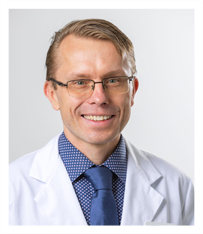Treating Neuropathy with Regenerative Medicine
Neuropathy is a general medical term for sick or dysfunctional nerves.
According to studies around 8% of the population over the age of 55 is
affected by Neuropathy and the symptoms it produces.
Nerves can be thought of as electrical wires within our body that carry
information to and from our brains. These nerves sense our environment and
move our extremities. Nerves can become sick and dysfunctional through
mechanical forces (compression or stretch) or metabolic factors such as
elevated blood sugar, abnormal thyroid function or a lack of nutrients (such
as B vitamins). Toxins such as alcohol and certain medications can also
contribute to nerve damage. Often, multiple factors are involved in the
development of neuropathy.
The most important factor when treating a neuropathy is determining that
this is the correct diagnosis. There are many reasons for someone to
experience numbness and tingling in their extremities aside from neuropathy.
The cornerstone of the evaluation of patients with peripheral neuropathy is
a comprehensive nerve conduction study and electromyography (NCS/EMG). These
tests can determine the presence and the severity of any neuropathic
pathology as well as looking for other reasons for symptoms, for example a
pinched nerve or stenosis in the spine.
For those that have a true peripheral neuropathy and are seeing a
traditional medical practitioner the treatment options are very limited.
Patients are generally given medications like gabapentin or pregabalin
(Lyrica) to decrease the nerve pain, but this does nothing to improve the
function of the nerves.
Thankfully there are new state of the art treatments for those affected by
neuropathy.
The mainstay of our Neuropathy treatment at Integrative Rehab Medicine
involves nerve hydrodissection. This is a nonsurgical injection technique
used to free up inflamed and injured nerves. The word hydrodissection comes
from two words: “hydro” fluid and “dissect” to open up or separate. Even
slight compression of the nerves can cause them to swell and function
abnormally. Tissues such as fascia, scars, muscles and tendons can congest
the nerves on their path in the extremities. Freeing up the nerves with
hydrodissection allows the nerves to regain normal function and heal.
For the procedure, the course of the nerve is mapped using a high-resolution
ultrasound. Next, under ultrasound guidance, a thin needle is used to
carefully inject solution around the nerve, separating it from the
surrounding tissues. Once the nerve is released, nerve inflammation resolves
and symptoms quickly improve.
These treatments can be performed using dextrose which is a type of sugar
solution that has been used therapeutically in various ways. Dextrose
diluted in sterile water is used to decrease nerve inflammation and improve
nerve function. Research has shown that injection of 5% dextrose around
nerves very quickly turns off neurogenic inflammation.
When a stronger response is needed, Platelet Rich Plasma (aka PRP) may be
used for the hydrodissection treatment. Platelets are packed with growth
factors that stimulate a regenerative response. PRP has been shown to
stimulate nerve healing and improve nerve function in multiple human and
animal studies.
This technique of nerve hydrodissection is combined with energy medicine
modalities including laser therapy and Pulsed Electromagnetic Field Therapy
(PEMF), nerve specific physical therapy and nutritional support to improve
the effects of the treatment.
If you or someone you know is dealing with the symptoms of neuropathy and
are looking for more than just medications to mask the symptoms, be sure to
schedule your consultation today! We look forward to helping you on your
healing journey.

